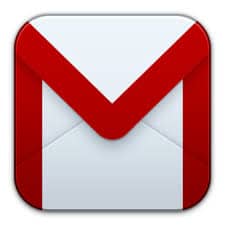The New Gmail Interface Means You Can’t Rely on Email Marketing Alone
 Google rolled out its new tabbed Gmail interface recently to mixed reviews. Some enjoy its ability to compartmentalize messages while others prefer to sift and sort themselves (in these cases, users must change the default setting to accept all messages in their ‘Primary’ folder).
Google rolled out its new tabbed Gmail interface recently to mixed reviews. Some enjoy its ability to compartmentalize messages while others prefer to sift and sort themselves (in these cases, users must change the default setting to accept all messages in their ‘Primary’ folder).
Folks, there are no rules on how to avoid having your messages delivered to the ‘Promotions’ tab if a user has not specifically indicated a desire to receive them in the ‘Primary’ inbox. (However, it appears that marketing messages sent through social networks like LinkedIn will appear under the ‘Social’ tab.) Because of this, B2B marketers should expect a drop-off in open rates.
Buyers who wish to receive emails from you can simply drag an opened message or the email header into the ‘Primary’ folder. Companies in the B2B and B2C spaces are encouraging their prospects and customers to perform this step to make it easier to receive requested offers, promotions, and updates together in a single folder.
While there may be little you can do to prevent messages from being delivered to the ‘Promotions’ tab in Gmail, you can adjust your digital marketing practices to rely less on email marketing and more on other content delivery channels. We’re not advocating the exclusion of email, we’re simply suggesting an approach which relies more heavily on social marketing, thought leadership articles, and search strategies.
As a general rule – absent the Gmail changes – your automated marketing practices should be diversified to begin with. Automated marketing experts know the secret to successful deployment of MA functionality comes down to diversifying your channels and producing great content. Lead Liaison recommends a strategy that integrates automated social posting, email campaigns, and link building in order to be effective in this changing email environment.
Email personalization using customized fields can help when it comes to appealing to your leads. Some experts suggest that Gmail users opening the ‘Promotions’ tab may be in a buying mood when they access that tab, so all hope is not lost. But the jury is still out as to how inclined they will be to open your message when it is grouped with other (potentially poorly-crafted) offers.
When your email IS opened, make sure that the message is strong enough to drive click-through and the landing page is designed well enough to facilitate actions such as completing a web form. Automated responses to lead inquiries must be swift and provide adequate value so your leads will be inclined to move your email marketing messages to Gmail’s ‘Primary’ tab.
It is likely that other email service providers will follow suit if Google’s implementation gains wider approval among its users. This will expand the challenge of driving email marketing success. Remember to stay diversified in your automated marketing tactics so the impact of the new tabbed Gmail interface doesn’t significantly lower your marketing effectiveness.



